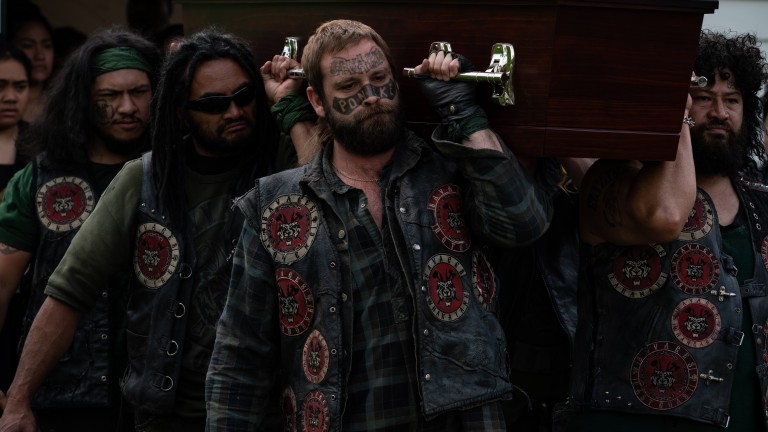There was a sequel to Once Were Warriors, that Kiwi landmark of 1994 set within the country's Maori and Pacific Islander communities - 1999's What Becomes of the Broken Hearted? - but it went straight-to-video (and generally underdiscussed) in the UK. Sam Kelly's Savage is a standalone item, but one that often feels like a prequel of sorts, so closely does its world tessellate with that of its predecessors. Kelly sets before us the following: a backwater town, not big or forgiving enough for anything other than the narrowest and most suspicious of minds to gather; penned-in and pent-up characters; and an uneasy tension between ethnic groups still operating along tribal lines. We open in 1989, in the bruising company of a biker gang - the Pokene Savages - doing its bit for diversity, in that it's presided over by growling, hammer-wielding blondie Damage (Jake Ryan, who might resemble Aaron Eckhart or Alexander Skarsgard were it not for his mullet and conspicuous face tattoos) and second-in-command Moses (John Tui). Yet after dipping an understandably tentative toe in this mucho-macho world, Kelly then follows these characters back to 1965, to illustrate what it was to grow up in such a violently divided place, and how the unlikely alliance between Damage and Moses first came about. Kelly's concern is with the haphazardness of youth - we're vaguely reassured when Damage (born Danny) leaves behind the Nazi flag we briefly see one of his white cohorts flying in the 1970s scenes - and the getting of wisdom, although this development will be deferred for several decades, hard won, and never at any point looks like much in the way of fun.
It is, then, a very different depiction of Pacific Eighties life than Taika Waititi's fondly nostalgic Boy: Kelly drags us back to what appear literally unenlightened times - cinematographer James L. Brown insistently tamping down his hues - and then even further into the Dark Ages. The film that shapes up before us is one of two halves, and there are places where the protagonist's haphazardness slips into the wider picture; yet that roughness is, finally, the source of Savage's power. The 60s/70s sequences are a little run-of-the-mill, like an afterschool special that's had permission to turn the air blue from time to time. (The violence, kept largely off-camera, doesn't hit home as it has done elsewhere.) Yet Kelly pushes notably deeper when we circle back to the late Eighties, helped in no small part by Ryan's darkly charismatic performance. If the actor doesn't go full Russell Crowe-in-Romper Stomper psycho, he patrols the periphery of a similar scene most effectively. Too much the underdog to give into his brother's seething ethno-nationalism, Damage comes to realise he may now be too old to romp or stomp as he once did, and there's something intriguing in the sight of this sometime destroyer of worlds sensing he may have lessons in self-preservation to pass on: witness his wholly unsentimental mentoring of Red (Poroaki Merritt-McDonald), a kid he seems as likely to throttle as nurture. You'll require a high tolerance for men locking antlers - often in the confines of a makeshift biker bar that resembles a rec yard - though Kelly also works in revealing, contrapuntal scenes in which those men fail to relate to those rare women they don't immediately scare off, and some delicate imagery besides: consider the fence on which Damage carves a notch for each passing year, a marker of his inability to move on, a prison tally chart, only on the outside.
Savage is now playing in selected cinemas.

No comments:
Post a Comment